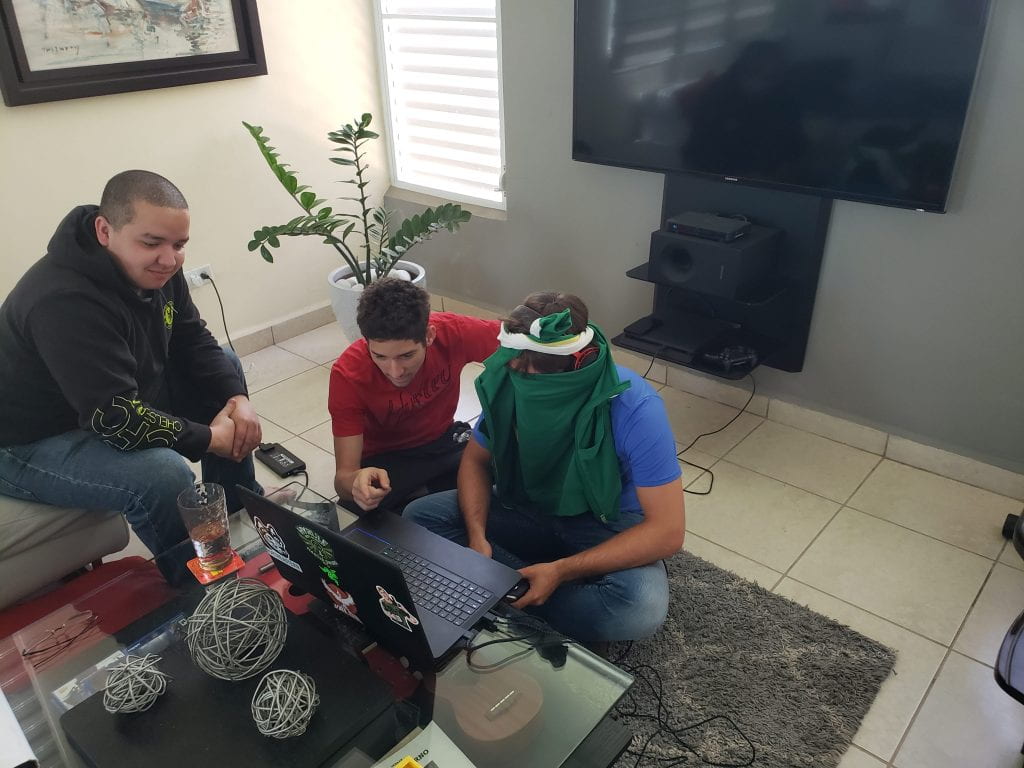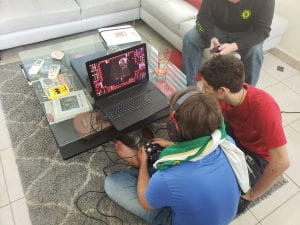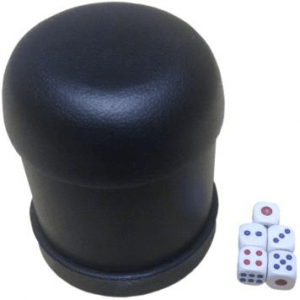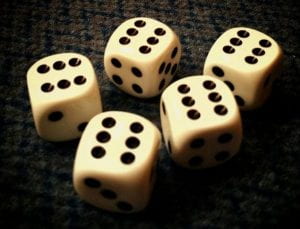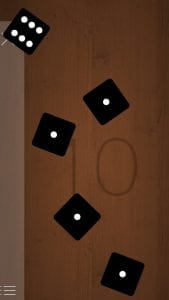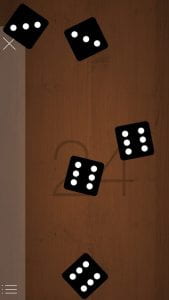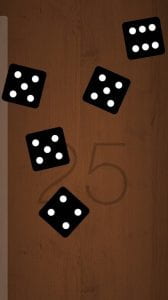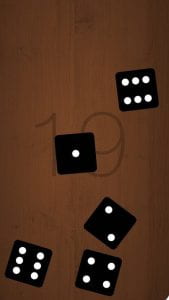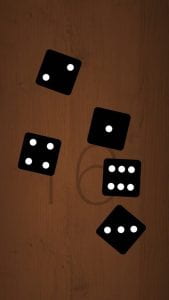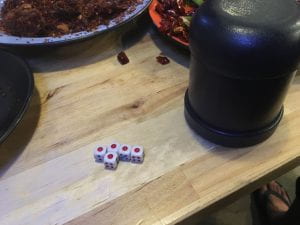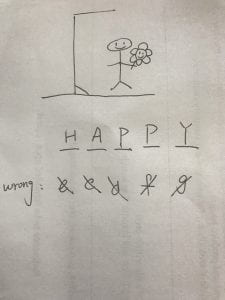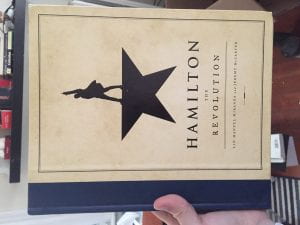Battle of fighters
4 Players
Materials
Two decks of 52 playing cards
Aeroplane Chess
One 6-sided dice
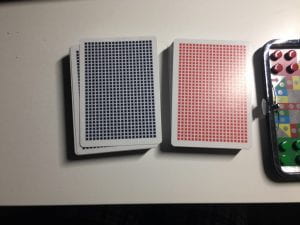
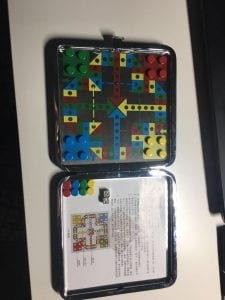
Rules:
Players: Four colors represent four different players. Every player can own 5 planes(fighters) entering the air war. Four colors also matched four suits of playing cards. Red fighter means the heart suit, yellow matches the diamond card, blue is the club suit, and green represents the Spade suit.
Starting: Four players own their own fighters on their bases that match their color, located at the corners of the board at the beginning of game. Each player takes a turn by rolling the dice and according the numbers of dice to draw the same numbers of cards from card pile of game which contains shuffle players cards (104 cards– two decks). Player can follow the rule of cards to use their hands, enter, move, or do other actions for their fighters. Each try to use their fighters to shoot down all other players’ fighters.
When the fighter arrives the flying space that fit fighter’s color, this fighter can jump to the corresponding space.
The plane can hide in its color plane port, but this plane can just stay in the port for three turns.
Every turn for every player, each can just use two cards including common number cards or special skill cards.
Shoot Down: when player A’s fighter lands on another player B’s fighter, B’s plane will be shot down and never enter the game.
The Rule of Using cards: Move of Fighters on the board clockwise around the track, the number of moving spaces indicated by the number of using court. The courts (number card) are just 1 to 10. And J, Q and K only can be used for players make their fighter enter the track and join the battle from the base. Fighters on the base cannot enter the war. If the suit of K matches the color of player’s fighter, this fighter can use the special skill of this suit’s K. Otherwise, K can just be regarded as the card that makes fighter enter the war.
Heart K: Make one plane has one more live. (when this plane was shot down, it can enter its base and enter the war again)
Diamond K: Draw three cards from card pile.
Club K: Choose one number from 5 to 10 as steps to move one fighter on track.
Spade K: Make two fighters enter the war
Limitation: if after starting game 5 minutes, players still do not once send at least one their fighter for entering war, these players will lose, quit the game and other survival players continue the game.
Artist Statement:
Taking advantage of appropriate pieces game to create a new game was the main idea of my game. Not only I used the appropriation on materials and rules of two games, but also combined some cultures of two games. Learning this art of appropriation was in lecture and the first impression of appropriation for me is Dada. Dada represents producing a new art by transferring the readymade arts. My idea was inspired by some ideas from Dada book and lectures.
Zurich Dada shown a kind of freedom feeling in their productions. Because the origin of Dada was launched in here during the World War I. As one neutrality country, many different kinds of refugees escaped to here from the War. Hence, many blends of the cultures prompted the birth of Dada culture. Hence, in my game, I consider the war element, especially for air war. Later, I wanted to combine two cultures together in this game, and I utilized the Chinese Aeroplane chess game and European playing cards to transfer a new game. This new game contains the characteristics of Asian and European elements. Chess represented the historical battles and many subtle strategies used in the chess also shown in the Chinese historical war stories. Playing chess can be regarded as one mock war to develop our thinking ability. Playing cards’ K and Q can be regarded as the European royalty’s King and Queen. Different card represents a variety of status for different people, like social classes of Middle ages in Europe.
For the artwork of Marcel Duchamp, there is one meaningful production, which is the Duchamp Fountain. The Fountain breaks the understanding of art by people. The Fountain was a porcelain urinal, which was submitted for the exhibition of the Society of Independent Artists. This artwork represented Duchamp wanted to challenge the current art in New York and wanted to break the limitation of art. Hence, in my game, I also want to show something I want to break. The rule of cards did not follow the rules of playing cards. Level of cards will not show in my game. The card will not be judged by their values like people in Middle Ages European society judged by their status. I want to break this rule not only for the game, but also for the implication behind different of cards. Every number of cards just means the steps of moving fighter. Any step in some situations can play a decision role in the game. Because sometimes, you need Ace card to move one space and shoot down the enemy fighter closed your fighter. Although the value of the Ace is one, but it also can be more important than K.
In the Zurich Dada chapter, I found most dada artworks were constructed by different components from other different readymade artworks. So, in my game, I use the readymade chess pieces, chess board, dices and cards in playing cards. I did not create some new products in the game and just change some rules and add some new rules to form my new game. I choose the basic rule of Aeroplane chess including four players and move the chess pieces. And I added some new rules: like rolling dice to decide how many cards to draw and use cards to move chess pieces instead of original rule of chess that rolling dice to decide how many steps chess piece should move. Furthermore, the cards will be not judged value by their numbers rather than the game situations.
In conclusion, my game combined the cultures of Asian and European elements, some rules and materials of two games, changing rules of cards represents my ideas that I did not want card like people in society judged by their values or status. Choosing readymade games’ components to form my new game not only for using their materials, but also more important one is creating new concept and understanding to the readymade games.


